Photographer Roy Feldman’s exhibition at M Contemporary Art: Truth & Grace In Hamtramck
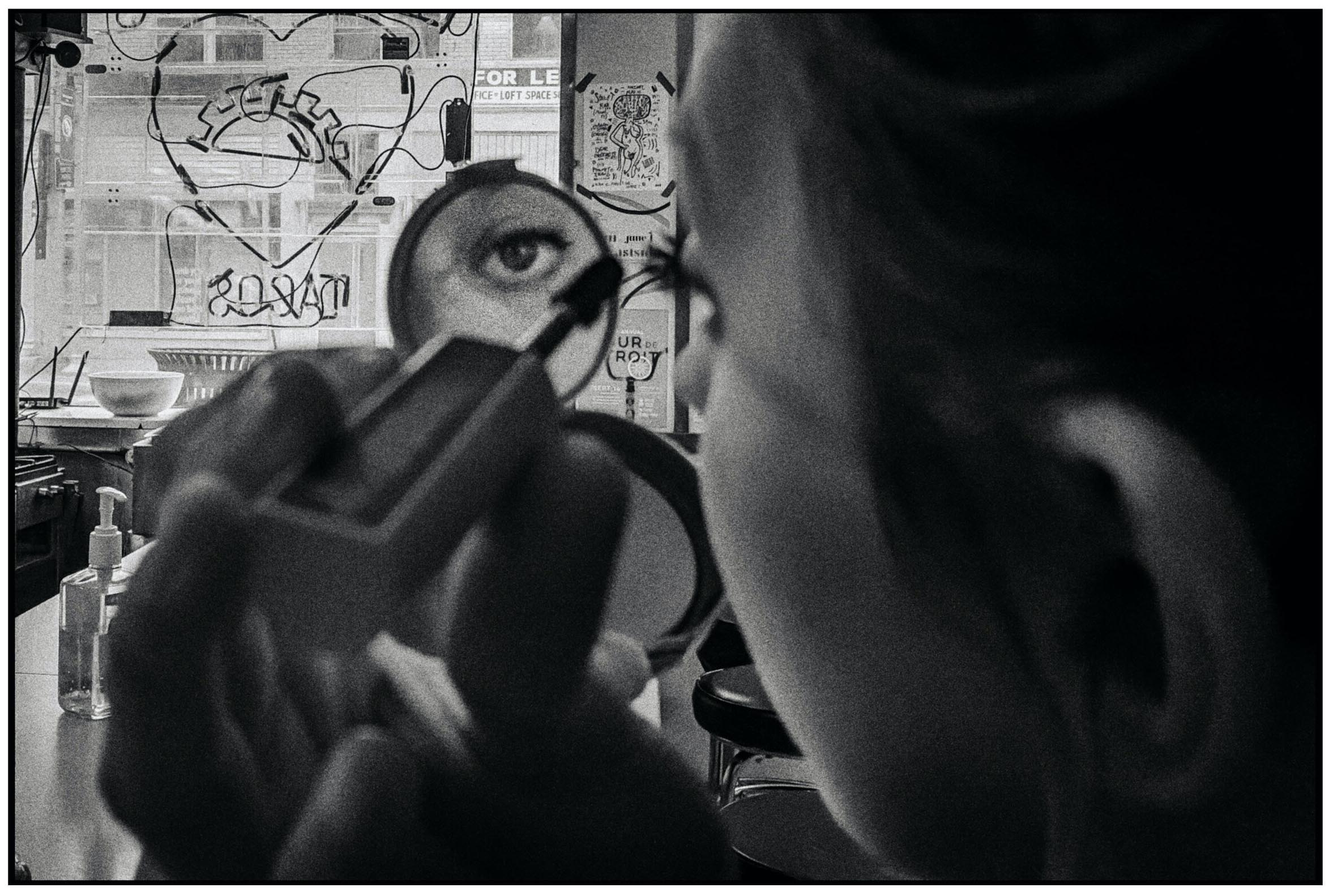
Roy Feldman, Untitiled, Archival Pigment, signed and edition numbered prints, 11 X 14″ All images courtesy of M Contemporary Art.
Truth & Grace in Hamtramck was in the planning for a year and scheduled to open on March 20, 2020, at the M Contemporary Art in Ferndale, but the state order to “Stay at Home” by Governor Gretchen Whitmer of Michigan made those plans impossible. As a result, I asked the gallery owner, Melannie Chard, to allow me to view the images online and proceed with a review. I had viewed Feldman’s photographs over the years and seen several images in person, which gave me enough perspective to proceed in this peculiar and highly unusual endeavor: write a review from art viewed online.
In the image Untitled, where a woman applies mascara, four planes of focus are: the foreground, head, hands, eyeliner brush, followed by the reflection in the mirror, followed by the interior of the salon, followed by the houses across the street. The viewer is drawn into the center of the image where it is split in half near the eyelid, asymmetry that almost goes unnoticed. All of this feels conscious and unconscious as Feldman probes the variations from black to gray to white.
Roy Feldman, a Detroit-based photographer and Emmy award-winning filmmaker with many years of experience as a photojournalist, grew up in Detroit and earned his BFA from the College of Creative Studies and worked for several years as a commercial photographer. Feldman worked for the Ford Motor Co., General Motors Corp., the U.S. Department of Energy, the North American International Auto Show, the Detroit Jazz Festival Foundation, and Big Boy Restaurants International (to mention a few) to earn a living, all the while he maintained his personal art of still photography.
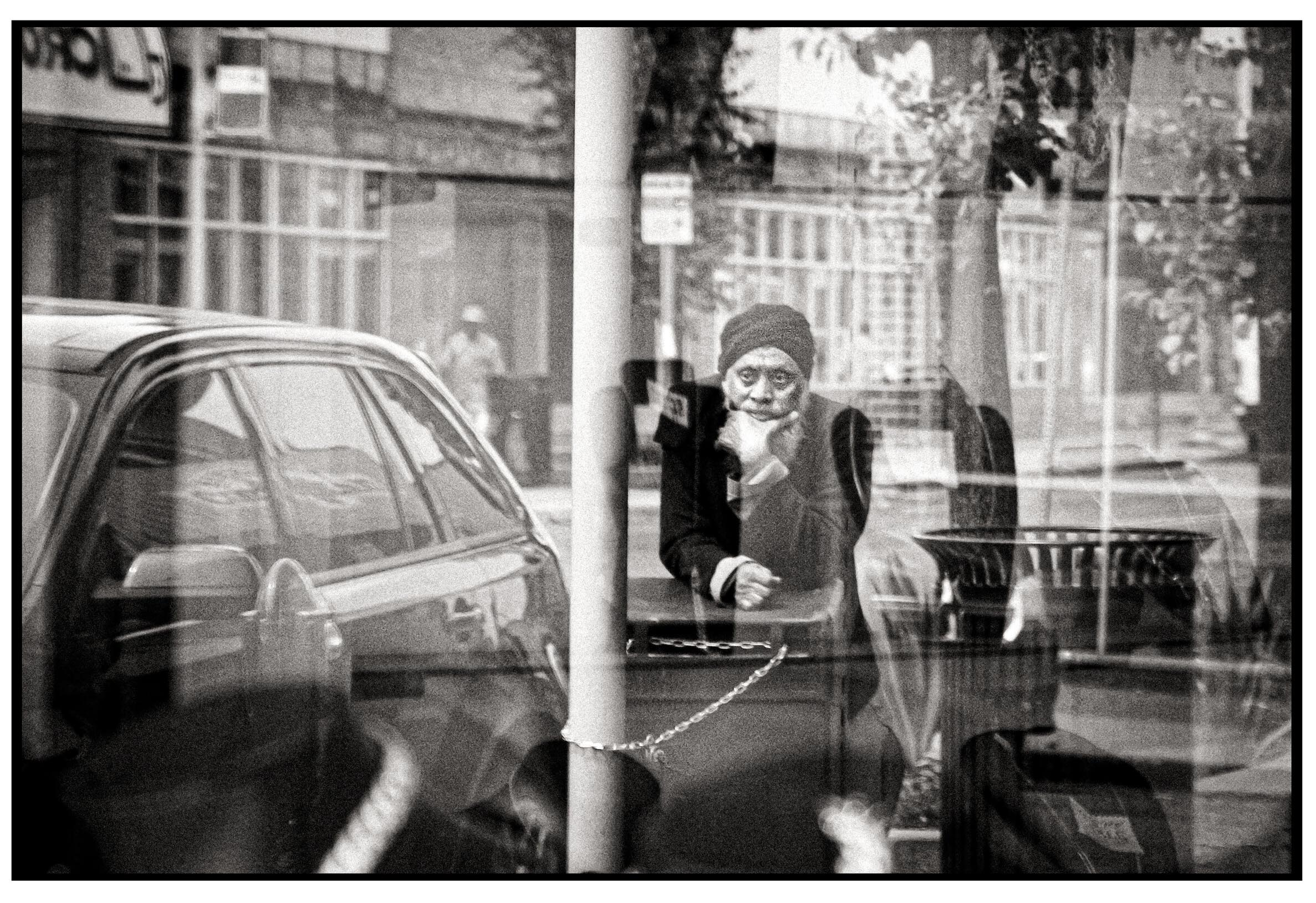
Roy Feldman, Untitiled, Archival Pigment, signed and edition numbered prints, 11 X 14″
Photography, in general, has undergone a revolution over the past fifty years. The digital revolution that began with the production of stand-alone cameras, then evolved to the high-quality camera in every smartphone, has had a tremendous effect on the commercial photographic industry. It has put freelancers out of business, shifted imagery to large stock image corporations like Getty Images, Shutterstock and Adobe Stock, and in combination with the Internet delivery capacity, it gave their images access to clients worldwide. Also, it instantly made every person with a smartphone a photographer. I say this because it did not make everyone an artist. It is the gray matter which resides between ones ears, that creates the artist, not in any type of technology old or new. As we trace that core concept from Daguerreotype, Eastman Kodak, Louis Lumiere, 35 mm Leica, Canon, and Nikon single-lens cameras, Hasselblad and the digital work that began at the AT&T Bell labs in1969, for capturing and creating an image based on pixels, the artists and their application has been the same since the mid-1840s. The capture of a photo image takes place in our hearts, our heads and our souls.
The work of Roy Feldman is a product of seeing and creating an image, no matter what the recording device. I purposely did not ask him about his process, nor these tools, whether digital or film, darkroom or computer because it doesn’t matter. Feldman said. “I wanted them to look like they could have been taken yesterday or 40 years ago. I really want to make it a piece of art. When you take a picture of something, you’re personally involved.”
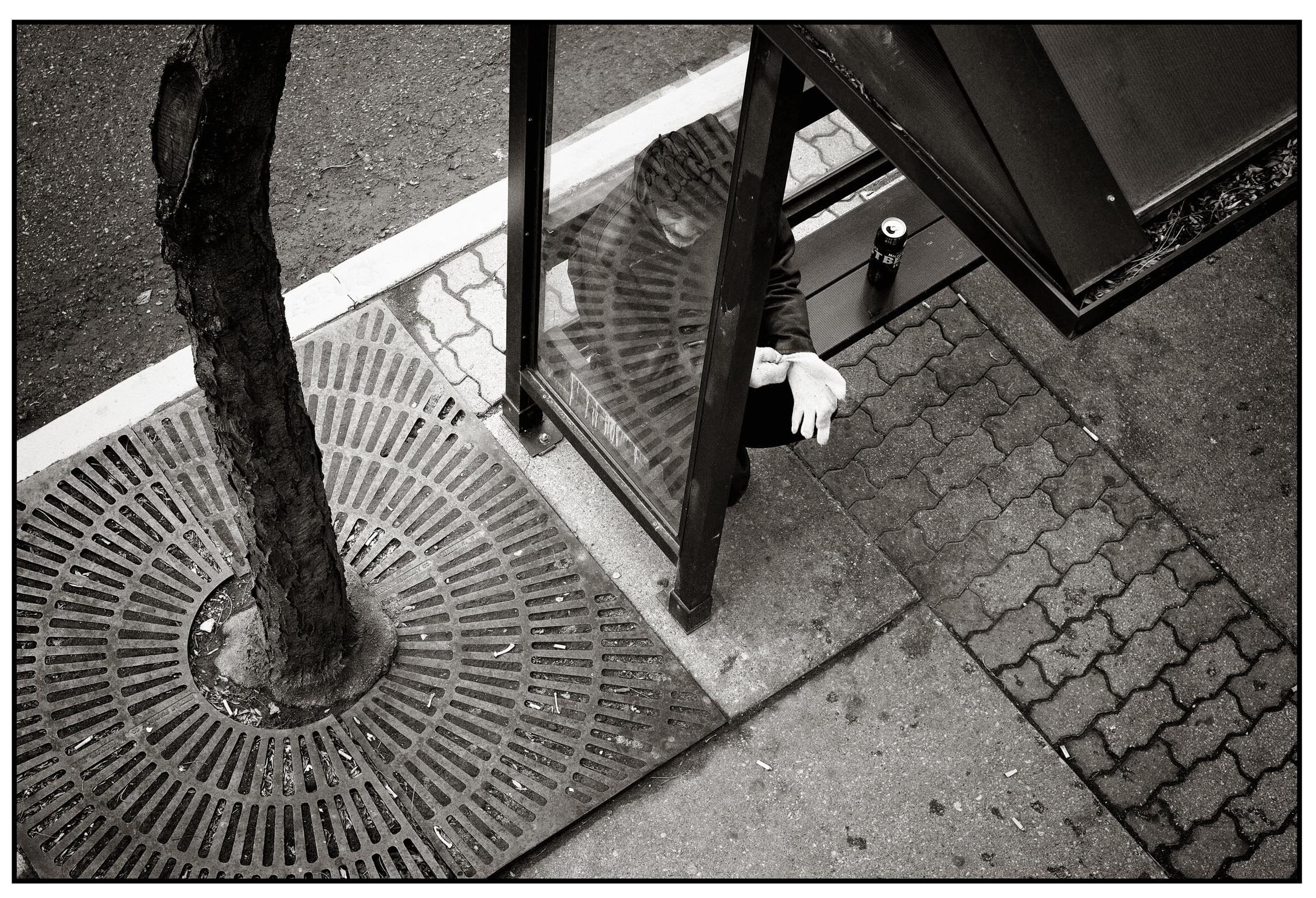
Roy Feldman, Untitiled, Archival Pigment, signed and edition numbered prints, 11 X 14″
Historically there is a large body of black & white artwork by world-renowned photographers, mostly from the 20th century, that may put Feldman in context: Andre Kertesz, Garry Winogrand, Lee Friedlander, Henri Cartier-Bresson, and Robert Frank, to name only a few. Feldman’s image of a man at a bus stop reminds me of early Kertesz while in Paris, by approaching his subject from above and developing this high contrast crisscross composition, with white-glove action surrounded with the geometric shapes. Feldman works hard at bringing reflections into his images, as he does here with the circular tree grate reflection off the bus stop glass, reminding me of Otto Steinert’s Pedestrian’s Foot (1950).
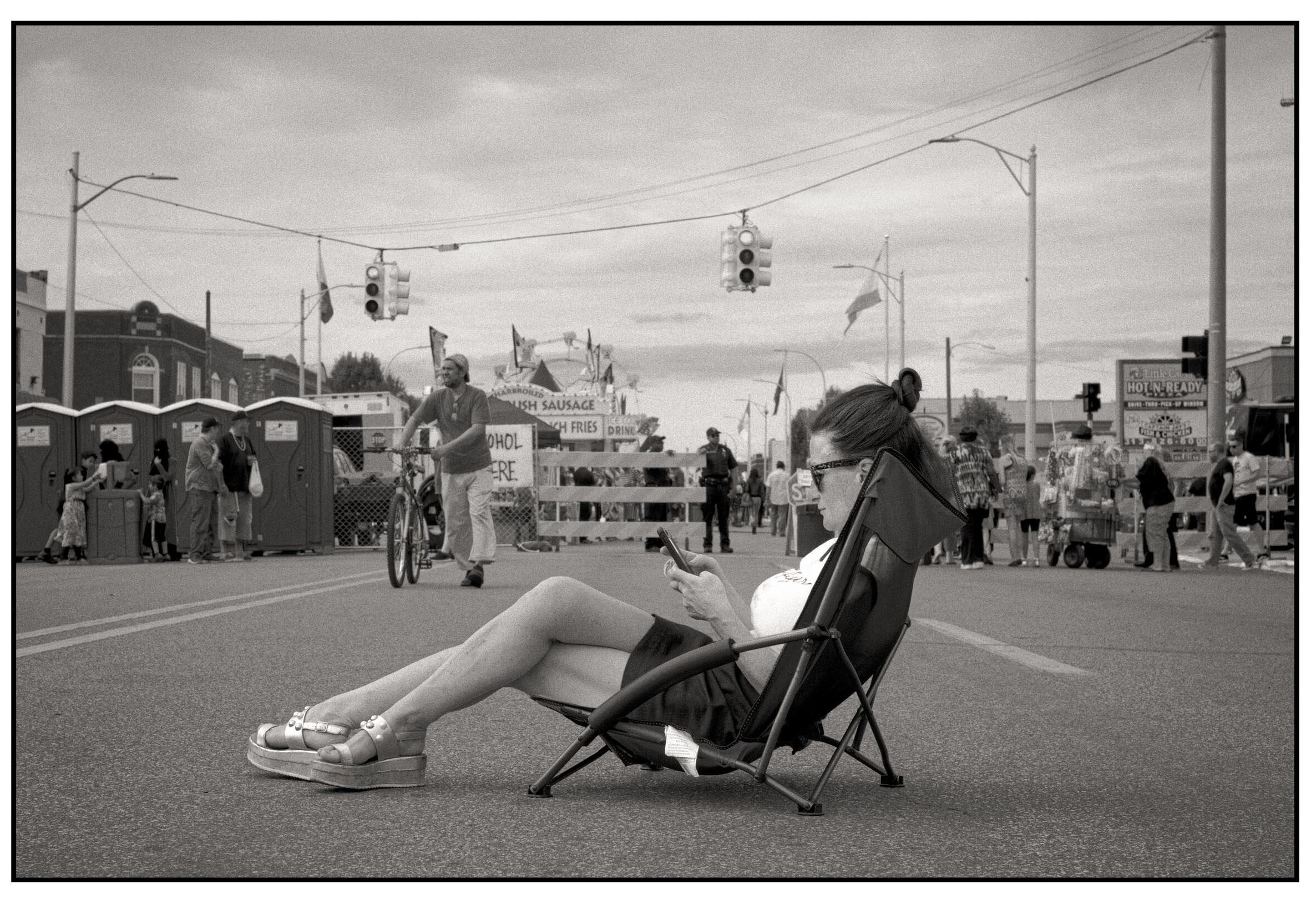
Roy Feldman, Untitiled, Archival Pigment, signed and edition numbered prints, 11 X 14″
The strength in Feldman’s composition here at this street fair is the formally centered and dominating woman sitting in the middle of a street, down very low with a wide-angle lens and the right amount of light that provides this kind of crisp focus on the subject and a backdrop of soft-focus using depth of field. In this one point perspective image, the evenness of light is seen on a cloudy day, with a small shadow cast from the concert-style chair, as this young woman views her smartphone. She reminds us of our own humanity.
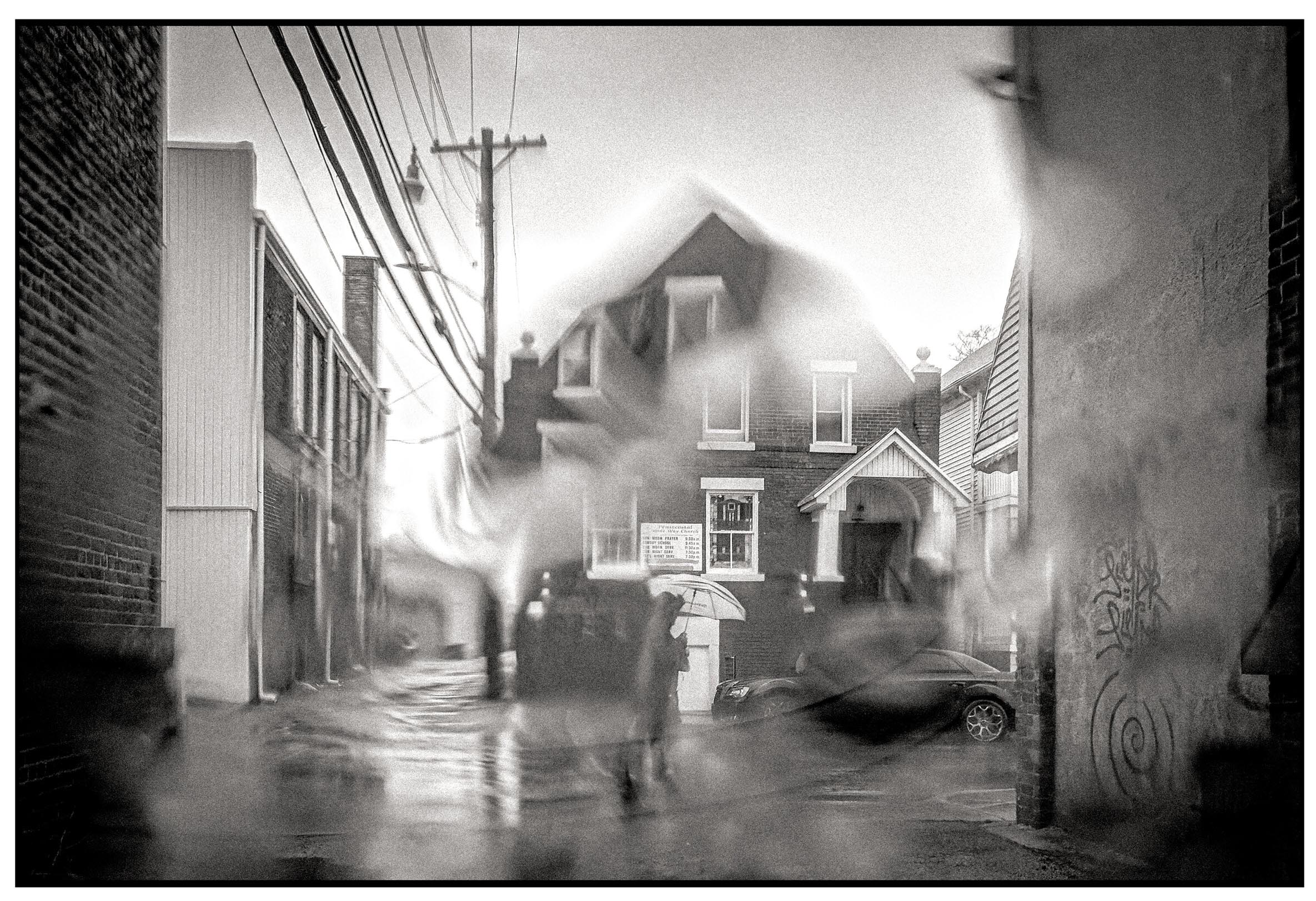
Roy Feldman, Untitiled, Archival Pigment, signed and edition numbered prints, 11 X 14″
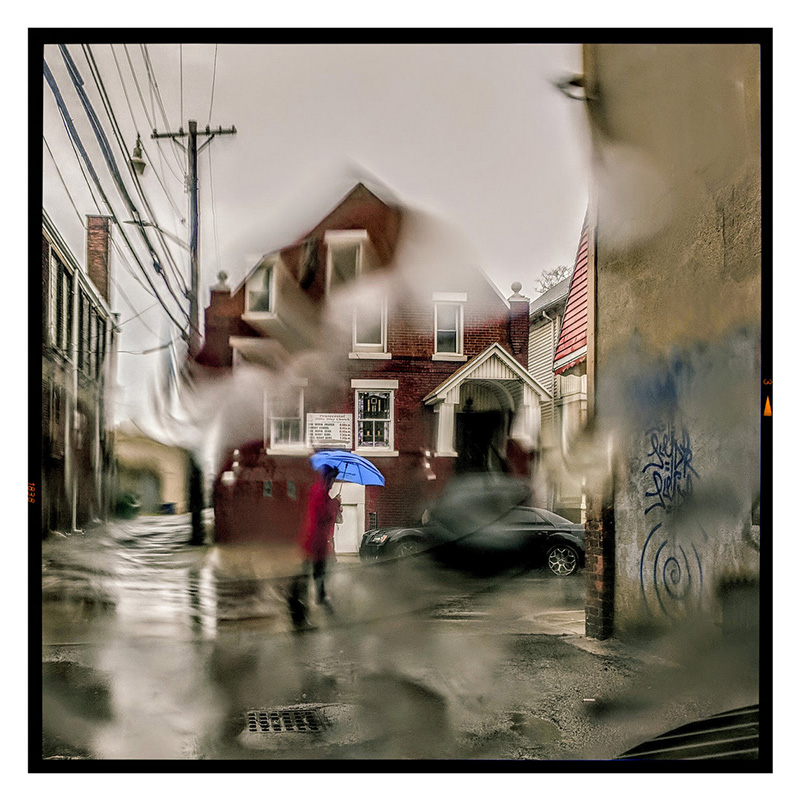
Roy Feldman, Untitiled, Archival Pigment, signed and edition numbered prints, 11 X 14″
Here in this image of a woman walking in the rain we notice the format 2 x 2 provides the square frame. Feldman’s lens gets wet, creating a spontaneous blur that he likes and keeps. In addition, for this exhibition, he converts a color image to black and white that fits nicely into the other photos. The strength in the color image is the red coat and blue umbrella center stage, grabbing our attention on the woman holding the umbrella, perhaps on the way to her car.
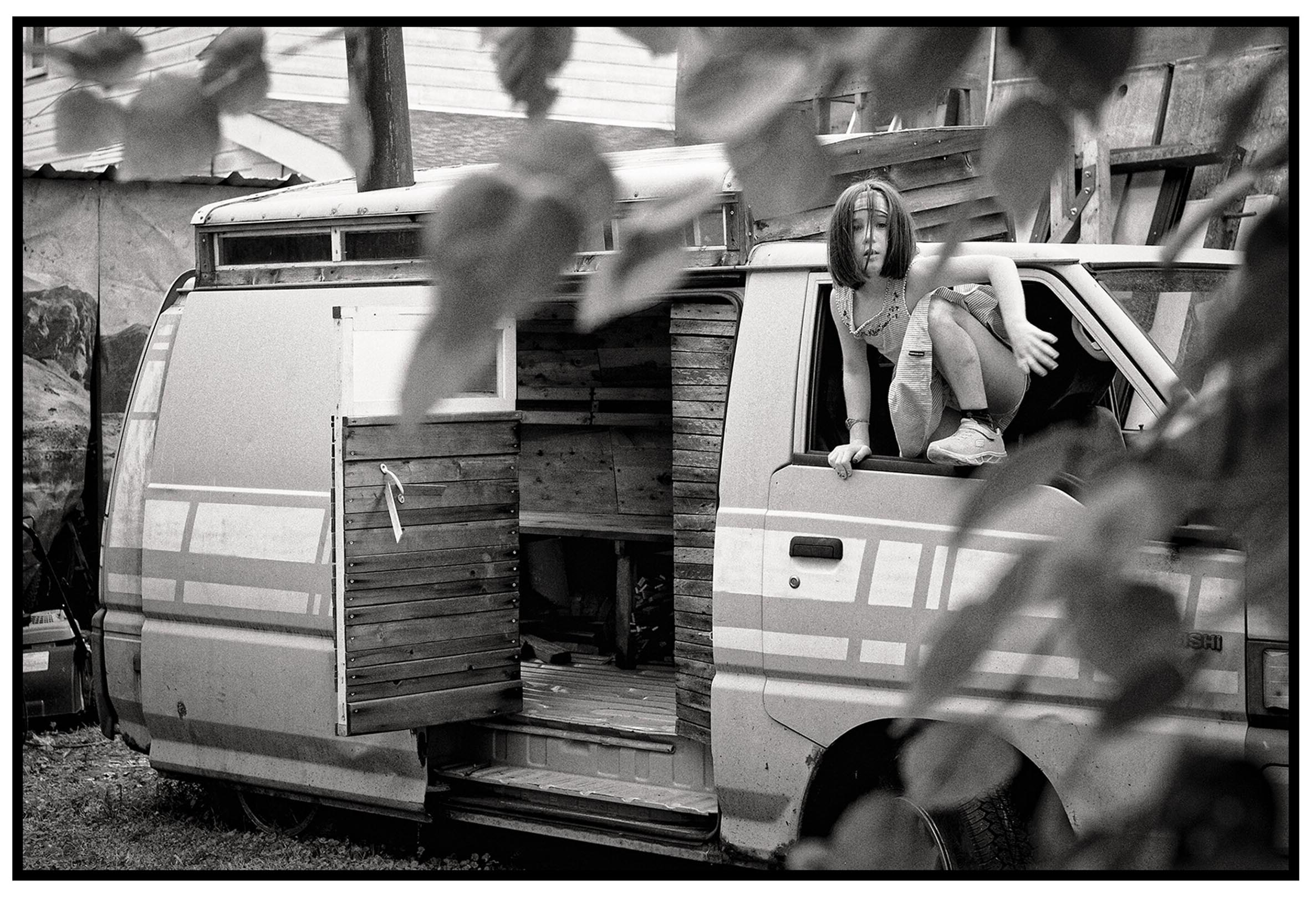
Roy Feldman, Untitiled, Archival Pigment, signed and edition numbered prints, 11 X 14″
One of the hallmarks of many photographers I have mentioned before is the “moment in time” concept. There was a time when people would debate calling a photograph art, and this concept would be used in an attempt to differentiate photography from painting or drawing. This artistic prejudice has faded over the years and is now a thing of the past, but more importantly, does it really matter? I think not. The image that catches a young girl about to jump out the window of a parked van, probably being used as a clubhouse, not so different from Robert Capra’s Death of a Loyalist Soldier (1936), both weighing heavily on a moment in time. The young girl is looking directly into Feldman’s camera, wondering if she has gotten caught in her escapade, while soft tree leaves in the foreground frame the subject like a 1970’s Kaufman & Broad illustration of their tract homes. (I used to paint those on illustration board for Detroit architect David Hamburg)
What ties the exhibition together is more than the format or dominance of black & white photography. It’s the honesty and humanity of Feldman’s work. He searches out the world of Hamtramck, a separate city with borders inside the City of Detroit, once a working-class Catholic Polish community and now the gateway to more than fifty nationalities. The elderly wooden homes are packed together like sardines, and the artists that live in and around them, live on the edges of life, eking out an existence and a celebration of truthful nomads.
In his statement, “My current ongoing series is devoted to creating an aesthetic event, where there is no political agenda, no documentation, with no intent to describe a subject or place. If my picture is easily summed up in a sentence, I feel I will have failed. I’d rather it be described as “well you really have to see it.”
Let’s hope that at some point in time, people will be able to do just that.
Photographer Roy Feldman’s exhibition at M Contemporary Art: Truth & Grace In Hamtramck
